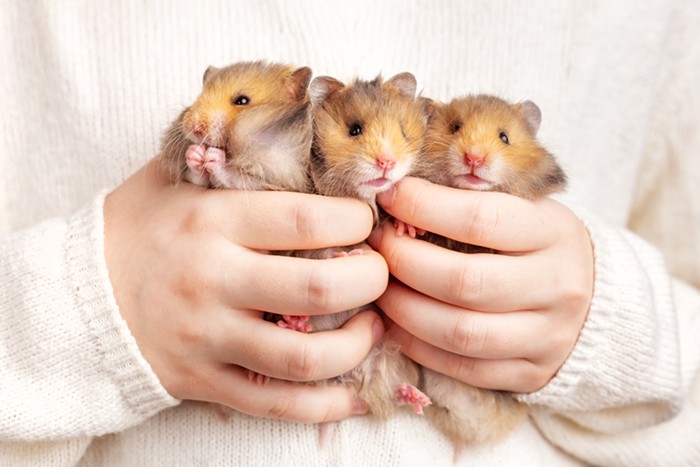MEDLAR LUCAN and Durian Gray, in their infamous and lurid The Decadent Cookbook, describe decadent food as making your mouth water and your hair stand on end. Perhaps that is why, when one of our editors emailed me one morning a few weeks ago asking if I wanted to go butcher a pig's head—adding, "you'll get to bring it home and play with it"—I accepted without hesitation. This invitation, to dismantle the most emotionally charged and personal part of an animal—the vessel of its senses, feeling, and knowledge of itself, as well as the face that advertised its soul—seemed to be something of which weird old Medlar and Durian would approve.
A few days later, I found myself on the #75, dressed in ragged jeans and a dryer-burned work shirt that I figured could take a little more staining, heading downtown. The setting of this venture into decadence was more antiseptic than depraved: I joined 10 other students—a few white-clad cooks, an older French woman in a smart leather jacket, a couple of outstandingly comfortable Asian women—in a gleaming kitchen prep space, around a massive glass table strewn with plates, handsome butchery books, stemware, and curious legal paperwork.
Camas Davis, of the Portland Meat Collective, taught the class. Davis is a veteran-food-writer-turned-pedagogic-butcher, and the willowy, serious woman made small talk while we signed forms that said ominous things like (I'm paraphrasing, but only a little), "this animal was alive until you signed up for this class," and "...at the time of its death, it belonged to you." The language was somber and serious. It put in clear terms that I was a killer, a commissioner of death—but it also implied that I was a cook, and if diligent, a feeder of many people. The grand responsibility of it all was carefully codified into the beginning of the evening, and imbued the rest of it with a carefulness and sense of purpose.
From there we were led to 10 gleaming cutting boards, each set with a fresh, scalded pig's head, intact but for the insides of its ears and the rings around its eyes (these can harbor parasites and legally they must be removed). The tongue lolled out of the mouth of the one I'd chosen, and it had been bit. I was too far along in the process of accepting the carnality of the task ahead to let the implication of this detail get to me—though I must admit that out of context, I wouldn't have liked to dwell on it.
Davis began to expertly bone out the skull, as we would be making a porchetta di testa—a rolled pig's head—which is tied, roasted, and sliced thin like a lunchmeat after hours of careful cooking. Her teaching style was easy, her blade was fast, and our attention was rapt.
After she tied and presented her handsome masterpiece, it was time to begin our own. Pig heads are tricky anatomical landscapes, and it requires a great amount of careful trimming to take out the skull, remove the nebulous pockets of unpalatable lymph glands, and roll them together so that the whole head cooks evenly and presents well. Wrestling my own pig's face-flaps together, after cutting them open and slathering them with mustard, vinegar, and spices, was like mating two shaved, doped cats between my hands. The final product—ugly, lumpy, and covered in yards of extra twine—looked more like something a madman mails to a helpless police force than a classic piece of charcuterie. The porchetta of the woman across the table from me looked like something you'd slip into the breech of a German warship's cannon.
I was unfazed, though. My finished pig, though unphotogenic, was something hard-won, and it was going to cook just fine.
After a few days of letting the spices set in the refrigerator, I placed the porchetta in a slow oven and let it cook overnight. Ten hours later the skin was a burnished brown, and the hair follicles had released more white stubble as the flesh had shrunk. Beautiful and ghastly, it was mouth watering with its caramelized tips, chicharrón edges, and plump folds of succulent jowl meat. It was a grand and timeless roast as appealing and delicious as any reptilian brain is likely to encounter; it also had five o'clock shadow and an unmistakable snout. It was Lucan and Gray's very definition of decadent, in its primal appeal and intellectual revulsion. Unable to wait for it to cool, I took a serrated knife to an edge of it, sawed off a bit of crackling skin and warm, melting fat, and took the plunge.
If there are five basic food groups, there must surely be more that are too cerebral and unquantifiable to make it into the federal labeling process. I often like to say pleasure is a food group we shouldn't discount; this carved out new territory beyond that. Or rather, it exposed long-buried territory we see only flashes of when we get our hands dirty and cook: involvement, pride, and understanding. It also, in a decadent fashion, was a challenge, a risk, and a thrill, made all the more satisfying for its sensual reward.













